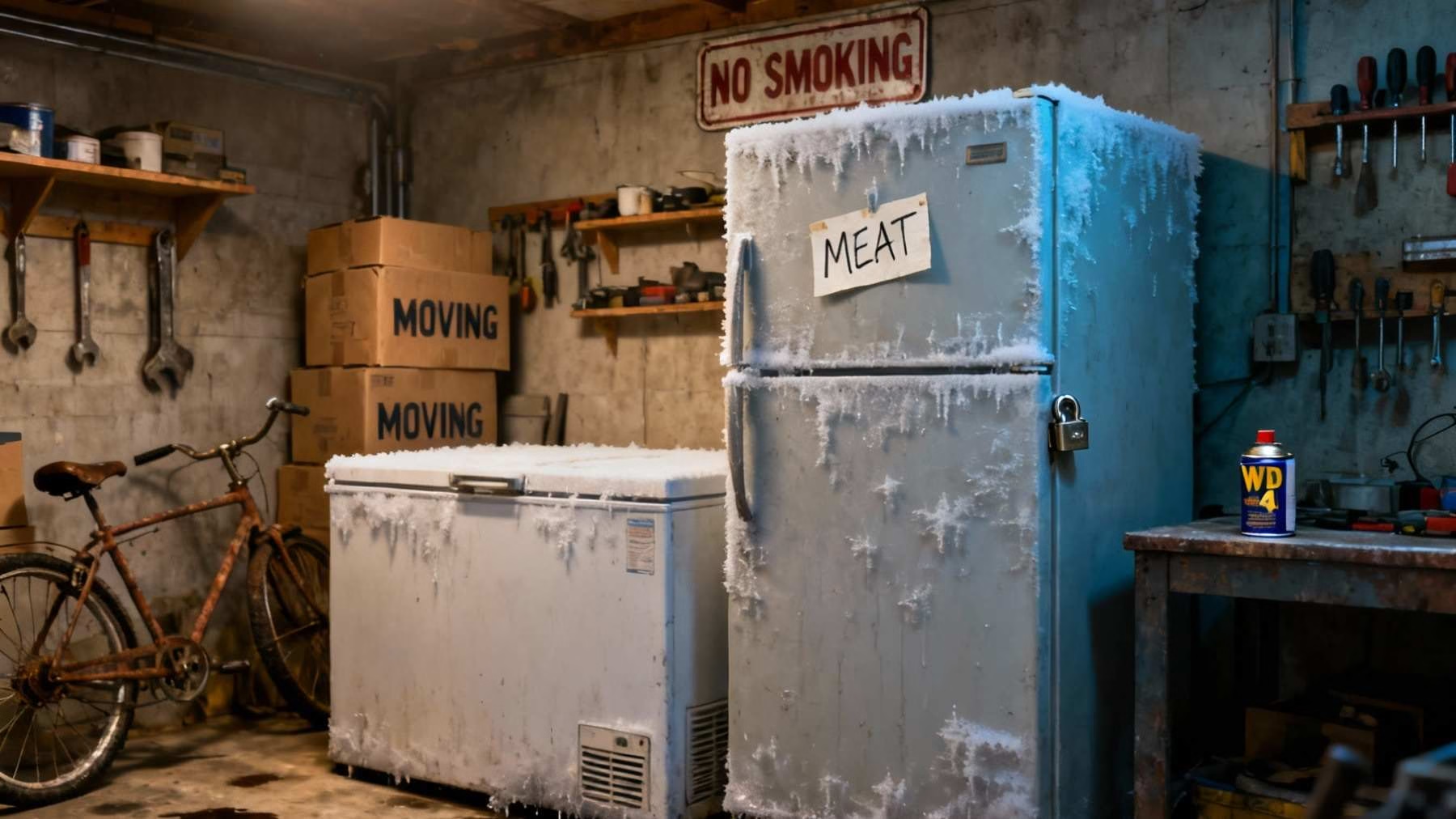Garages can be hard on freezers. If your freezer stops working, or won’t start, it’s often because of the temperature. It could also be a power problem. Dust, moisture, or poor air flow can also cause parts to fail. This guide will show you the common reasons a garage freezer fails. You will learn how to find the problem and how to fix or stop it. For model-level startup reliability and which units handled garage extremes best, see our Best Deep Freezer For Garage review.
Table of Contents
Common signs and what they tell you
First, know what is wrong:
- Freezer won’t start: No sound, no lights.
- Compressor hums but stops: You hear a click or buzz, then nothing.
- Freezer runs but is warm: The motor and fan are on, but it’s not cold inside.
- Freezer turns on and off a lot: It runs for short times and the temperature changes.
- Too much ice or wetness: Ice builds up or the walls are wet.
- Strange sounds: Knocks, rattles, or high whines.
Each sign points to a different cause. Some are easy to fix. Others need a pro.
Related: Best Deep Freezer For Garage
Step-by-step guide to find the problem
Step 1: Check the power
- Plug a lamp into the same wall outlet to see if it has power.
- Look at the cord for cuts, burns, or if it’s loose.
- Check your home’s circuit breaker and reset it if needed.
- Do not use a thin extension cord.
If the outlet has power but the freezer won’t start, the problem is inside.
Step 2: Check how hot or cold your garage is
- See if your garage is colder than freezing or hotter than 40°C (104°F).
- Most freezers are not made for such extreme heat or cold.
- In the cold, the oil in the motor gets thick and it can’t start.
- In the heat, the motor can get too hot and shut off.
Fix: Use a special heater in winter. In summer, make sure air can flow around it.
Step 3: Listen to the compressor
- No sound: The thermostat, start relay, or control board might be broken.
- Clicking or buzzing sound: The start relay or capacitor is often bad.
- Steady hum but no cold: The motor might be stuck or out of refrigerant.
You can use a multimeter to test the start relay.
Step 4: Test the thermostat
- Turn the temperature dial and listen for a click.
- If you hear no click, the thermostat may be broken.
- Use a tester to see if electricity is flowing.
If the test fails, put in a new thermostat.
Step 5: Look at the start relay
- Unplug the freezer. Take the relay off the compressor.
- Shake it softly. If you hear a rattle, it is likely broken.
- Test it with a multimeter.
If it’s broken, put in a new one that fits. Start relays often fail in garages.
We tracked failure rates and repair needs across five top models — read the Best Deep Freezer For Garage results for full breakdowns.
Step 6: Check the coils and air flow
- Dirty coils make the motor work too hard. It can get too hot.
- Clean the coils with a vacuum every few months.
- Leave space around the freezer so air can move.
Bad air flow is a common reason garage freezers break.
Step 7: Look for ice and check the door seal
- Too much ice can block air and trick the sensors.
- Check the door seal for cracks or gaps.
- Do the paper test: close the door on a piece of paper. If it slips out easily, the seal is bad.
Ice and bad seals make the temperature change and the motor work too much.
Step 8: Check the control board and sensors (harder)
- If your freezer has digital controls, look for flashing lights or buttons that don’t work.
- Power spikes or moisture can break the control board.
- Check the manual for error codes.
You may need a pro to replace the control board.
Easy fixes for common garage problems
- Too cold to start: Add a heater kit or move the freezer to a warmer spot for a while.
- Too hot and shuts off: Help air flow, keep it out of the sun, and clean the coils.
- Clicking sound: Change the start relay.
- Runs but is warm: Check the refrigerant (you may need a repair person).
- Too much ice: Let the ice melt and check the door seal.
- No power: Reset the breaker, test the outlet, change a fuse if you have one.
These fixes solve most garage freezer problems.
Should you fix it or buy a new one?
Fix it if:
- The issue is the start relay, thermostat, or door seal.
- The motor hums but won’t start and the relay is broken.
- You can get the parts and the control board is easy to reach.
Buy a new one if:
- The motor is stuck or there is a leak.
- The body is rusty or the insulation is bad.
- Many parts have broken in a short time.
Think about cost. If the repair is more than half the price of a new freezer, you should probably get a new one.
How to stop problems before they start
- Use a surge protector made for appliances.
- Clean the coils every three months.
- Use a heater in winter and a fan in summer.
- Use a digital thermometer to watch the temperature.
- Keep the freezer off the floor and away from damp.
- Change the door seal every few years.
Stopping a problem is better than fixing it.
For immediate recommendations on garage-ready freezers with the fewest startup issues, see the Best Deep Freezer For Garage picks.

